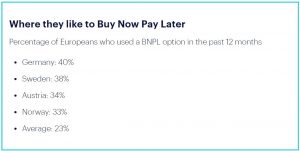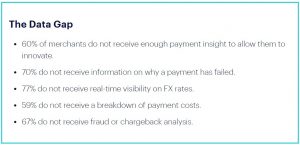Build Beyond: The New State of Retail
Experts from the industry discuss the new state of retail and the role of payment innovation in this rapidly evolving sector.
By any measure, the last 18 months have been a watershed for retail. Pandemic-induced lockdowns supercharged the migration to online shopping. In 2020, 96% of consumers in the UK and Europe shopped online, up from 60% the year before. Retailers with a mature ecommerce offering, or with the agility to pivot quickly, benefited. Others were caught out. And the competition is hotting up with critical advantages identified and activated within payments.
Three payment factors of note have emerged.
1. Security is a priority for consumers
That online shoppers value security is perhaps intuitive. How much they value it is maybe more surprising. Previous research from Checkout.com found that consumers are willing to pay in the region of $4.13 extra per transaction for higher security, specifically in relation to encryption and 2-factor authentication. This puts security concerns higher than convenience, device-optimization and payment preference.
Before the pandemic, according to Christoph Emminger, Head of Transaction Products, Chrono24, customers often used their site for research but went on to purchase the high-ticket items in store as they were wary of online shopping. The pandemic, however, forced many people to try buying these goods of value online. Customers now see that it actually works well.
These luxury goods, of course, require thorough fraud protection. And, as Winegarten points out, the advantage of a next generation PSP is that fraud prevention is inbuilt into the offerings from inception. And therefore more likely to stop fraud at the source, by employing fraud detection software. And the higher the value of the product category, the more critical it is for online retailers to have this capability.
“For merchants with high-ticket items, there are more sophisticated fraud tools. We have a purpose-built one in house and we definitely saw interest from merchants in this category, looking for that little bit of added security.”
Moshe Winegarten, SVP UK, Checkout.com.
2. Customers demand new and innovative payment methods
According to Anand, “Payments is not a commodity, it is an experience. If you don’t get your payments right, you will see a drop in your conversion rate and low customer loyalty.”
Deepak Anand, Senior Director Commercial Partnerships, Big Commerce
Creating the right experience is offering the right payment methods, including Buy Now Pay Later (BNPL).
The BNPL phenomenon is building, with an average of 23% of consumers across Europe having used it at least once, mainly for lower-priced items. And it’s not just the young generation, as Winegarten mentions: 48% of 45-54 year olds intend to make use of BNPL in the next 12 months, and almost a quarter of 65-74 year olds. This is not surprising as one estimate suggests that consumers in the UK alone saved £76 million in interest or fees in 2020 by using BNPL instead of a credit card.

But BNPL is not the only new player in the payments space. Crypto currencies are rising in popularity, with 29% intending to transact with them in the year ahead. Digital wallets may be more established, but are still viewed by some merchants as alternative payment methods rather than mainstream. While local payment schemes can also unlock new customers.
Merchants should employ payment methods like BNPL to increase conversion and acceptance rates while boosting cart size and value.
3. Innovation starts with access to the right data
Payment innovation comes in many forms—the checkout experience, automation of payment flows, the security that underpins it all. What they all have in common (if done right) is a reliance on data. So it follows that merchants who are able to access and analyse payments data, both their own and wider industry benchmarks, will be making better decisions. In order to have impactful innovation, Winegarten notes, merchants should use data to keep away from “Innovation for innovation’s sake. It’s got to be innovative for a reason.”.
Yet 60% of merchants do not feel that they receive enough payment insight to allow them to innovate.

The first challenge is to access your payments data. That can be easier said than done if you’re working with multiple payment vendors and across many different systems. Even if you can get a consolidated view of your payments operation, understanding what you’re looking at is often improved by having an expert at your side. They can help to triage your needs; because innovation does not mean having to completely upend things. Rather, it’s about using granular data to identify ongoing marginal gains.
“Innovation doesn’t mean turning things upside down. You have to analyze very sharply, especially when you look at the past 18 months, at what happened and what were the effects. It’s about continuous improvement, based on data that has been collected.”
Christoph Emminger, Head of Transaction Products, Chrono24.
***
This article has been republished with permission from Checkout.com.
If you enjoyed reading this article and would like to be notified when future articles are posted, please sign up for our email newsletter.
Are you interested in reading articles on a particular payments topic, company, payments industry executive or author? Click the search icon, it’s that magnifying glass on the top right-hand side of the website, and type in the keywords that interest you. You will then be presented with a list of any articles that match your search criteria.
***
To find out more about the future trends which will revolutionise online retail in Europe, read The New State of Retail report by Checkout.com which provides insights from over 10,000 consumers and 500 retail ecommerce leaders.
If you found this article helpful and would be interested in reading similar articles, please sign up for our email newsletter.
Are you interested in reading articles on a particular payments topic, company, payments industry executive or author? Click the search icon, it’s that magnifying glass on the top right-hand side of the website, and type in the keywords that interest you. You will then be presented with a list of any articles that match your search criteria.